The Lesser Known But More Horrible American Holocaust
By Sukumaran C. V.
31 May, 2014
Countercurrents.org
I think we must face the possibility that something is dreadfully wrong with society and that this is somehow connected to the bloody history of Western culture, a bloodiness that surpasses all others.— Deborah Root
The very title of David E. Stannard's book, in which he says that ‘within no more than a handful of generations following their first encounter with Europeans, the vast majority of the Western Hemisphere's native people had been exterminated', is American Holocaust . Ward Churchill, the Native American Indian activist, compares Columbus to Hitler in his wonderful but painful to read book Since Predator Came . Howard Zinn details the cruelty, violence and treachery the so called ‘civilising' and ‘civilised' race has committed on the Native Americans in his stunning work A People's History of the United States .
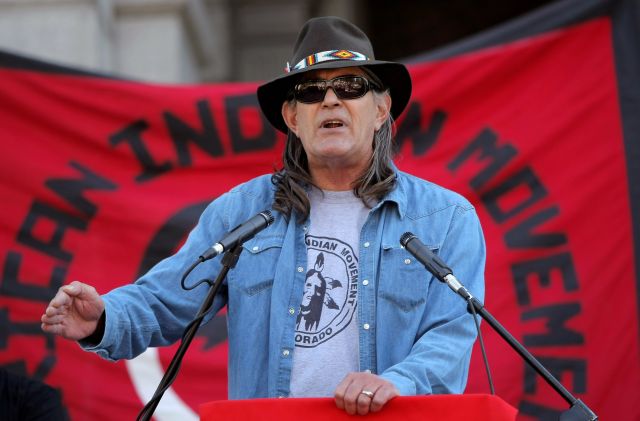
? Ward Churchill
And yet the word holocaust automatically reminds us of the genocide of the Jews by the Nazis. It is because history and knowledge are constructed by the West and tell only the ‘truths' that suit one particular race and that extol the so called ‘democratic' values of the West and the privileged.
Stannard writes in American Holocaust : “Just twenty-one days after the first atomic test in the desert, the Japanese industrial city of Hiroshima was leveled by nuclear blast; never before had so many people—at least 130,000, probably many more—died from a single explosion. Just twenty-one years after Columbus' first landing in the Caribbean, the vastly populous island that the explorer had re-named Hispaniola was effectively desolate; nearly 8,000,000 people—those Columbus chose to call Indians—had been killed by violence…It took a little longer, about the span of a single human generation, but what happened on Hispaniola was the equivalent of more than fifty Hiroshimas. And Hispaniola was only the beginning.”
In the essay titled ‘Deconstructing the Columbus Myth' in his book Since Predator Came , Ward Churchill says: “In 1493 Columbus returned with an invasion force of 17 ships, appointed at his own request by the Spanish Crown to install himself as “viceroy and governor of (the Caribbean islands) and the mainland” of America, a position he held until 1500. Setting up shop on the large island he called Espanola (today Haiti and Dominican Republic), he promptly instituted policies of slavery and systematic extermination of the native Taino population. Columbus' programs reduced Taino numbers from as many as 8 million at the outset of his regime to about 3 million in 1496. Perhaps 100, 000 were left by the time the governor departed. His policies, however, remained, with the result that by 1514 the Spanish census of the island showed barely 22, 000 Indians remaining alive. In 1542 only 200 were recorded. Thereafter they were considered extinct, as were Indians throughout the Caribbean Basin, an aggregate population which totaled more than 15 million at the point of the first contact with the Admiral of the Ocean Sea, as Columbus was known.”
Churchill continues: “Moreover, the proportion of indigenous Caribbean population destroyed by the Spanish in a single generation is, no matter how the figures are twisted, far greater than the 75 percent of European Jews usually said to have been exterminated by the Nazis. Worst of all, these data apply only to the Caribbean Basin; the process of genocide in the Americas was only just beginning…”
Nobody can read Gloria Jahoda's The Trail of Tears: The Story of the American Indian Removals 1813-1855 and Dale Van Every's Disinherited: The Lost Birthright of the American Indian without weeping inside them. Even after more than 300 years of sustained elimination of the native people and robbing of their lands, the U. S. Senate passed the Indian Removal Act (in 1830) at the behest of President Andrew Jackson. The misery that was forced upon the Native Americans following the Removal Act was bone-chilling.
Imagine hordes of people coming to our lands from a distant continent and start killing us, our aged ones, our little ones our wives, our infants, our sisters, our brothers and displace us from our homes and lands in which we have been living from time immemorial, and scalping our beloved ones, who were killed, to earn rewards for killing so many of us. (The Pennsylvania governor Robert Morris, in 1756, offered a reward of 150 British pounds for the scalp of every male Indian and 50 pounds for that of every female Indian). And imagine, these hordes, without satisfying with all this wanton cruelty, displacement, murder and vandalism, passing an Act to remove us from our own lands forever! And imagine that these people keep telling the world that they are the most civilised and the most democratic!
Dale Van Every says: “The Indian was peculiarly susceptible to every sensory attribute of every natural feature of his surroundings. He lived in the open. He knew every marsh, glade, hill top, rock, spring, creek...He had never fully grasped the principle establishing private ownership of land as any more rational than private ownership of air but he loved the land with a deeper emotion than could any proprietor. He felt himself as much a part of it as the rocks and trees, the animals and birds. His homeland was holy ground, sanctified for him as the resting place of the bones of his ancestors and the natural shrine of his religion. It was from this rain-washed land of forests, streams and lakes, to which he was held by the traditions of his forefathers and his own spiritual aspirations, that he was to be driven to the arid, treeless plains of the far west, a desolate region then universally known as the Great American Desert.”
In their own vast and fertile continent, the American Indians confronted white settlers—‘looters, land seekers, defrauders, whiskey sellers, thugs' (in the words of Howard Zinn)—everywhere and they (the Indians) were either killed or driven out. They were allowed to live only on ‘land too barren for white settlers.'
In late 1831, ‘marshaled by guards, hustled by agents, harried by contractors,' 13,000 Choctaw Indians ‘were being herded on the way to an unknown and unwelcome destination like a flock of sick sheep…' By midwinter 1836, more than 15,000 Creek Indians were forced to migrate. Starvation and sickness began to cause large number of deaths.
Van Every writes: ‘The passage of the exiles could be distinguished from afar by the howling of trailing wolf packs and the circling of buzzards.' And this is the United States which is projected by the conventional History as the greatest democracy in the world and this is the U.S. the elite India wants to emulate.
As Howard Zinn says, “There is an underside to every age about which history does not often speak, because history is written from records left by the privileged. The history of any country, presented as the history of a family, conceals fierce conflicts of interest between conquerors and conquered, masters and slaves, capitalists and workers, dominators and dominated in race and sex. And in such a world of conflict, a world of victims and executioners, it is the job of thinking people, as Albert Camus suggested, not to be on the side of the executioners.”
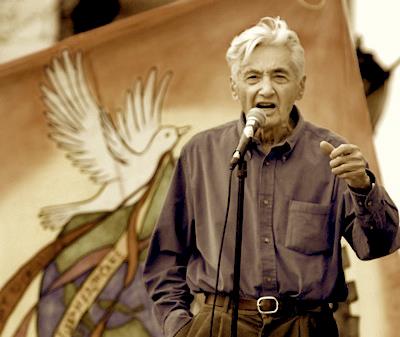
? Howard Zinn
We should rewrite and relearn history to understand that the history we have been taught and are being taught has always whitewashed the cruelty of the oppressor and presented the welfare of the looters and the oppressors as the history and progress of the human race, hiding the actual history of cold-blooded annihilation or subjugation of the indigenous human populations and the less privileged; and the destruction and devastation of the Environment.
See the ‘civilised' behavior of the ‘civilising' race when Columbus and his gang settled in the ‘New Wolrd': “Columbus, desperate to pay back dividends to those had invested, had to make good his promise to fill the ships with gold. In the province of Ciaco on Haiti, where he and his men imagined huge gold fields to exist, they ordered all persons fourteen years or older to collect a certain quantity of gold every three months. When they brought it, they were given copper tokens to hang around their necks. Indians found without a copper tocken had their hands cut off and bled to death. ...Total control led to total cruelty. The Spaniards thought nothing of knifing Indians by tens and twenties and cutting slices off them to test the sharpness of their blades. Las Casas tells how two of these so called Christians met two Indian boys one day, each carrying a parrot; they took the parrots and for fun beheaded the boys.” (Howard Zinn, A People's History of the United States )
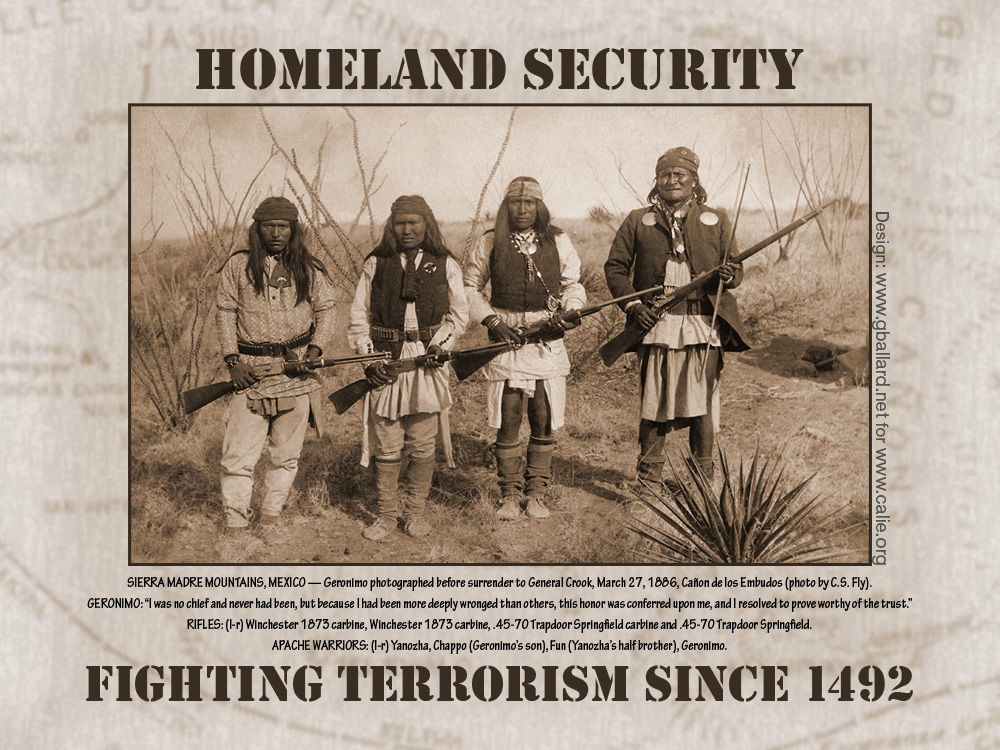
The day of Columbus ' landing which triggered the total elimination of the native people of two continents is still celebrated as Columbus Day in the U. S. and many other Latin American countries as if we celebrate independence day! Nobody who knows the true history of the U. S. can love that nation. The nation has been built by slaughtering the Native Americans en masse. The nation has been built on the sweat and blood of the Native Africans. The nation has enriched itself by looting the resources of the people all over the world. The nation has killed more people in the world than any other nation has ever had been able to kill in the whole history of the humankind. The U. S. is the Frankenstein who created the monster called Islamic Terrorism.
The Native Americans ‘were remarkable (European observers were to say again and again) for their hospitality and their belief in sharing.' Columbus himself reported that ‘ when you ask for something they have, they never say no. ' And this is how the ancestors of the U. S. dealt with them:
“Among the Arawak Indians, mass suicides began with cassava poison. Infants were killed to save them from the Spaniards. In two years, through murder, mutilation, or suicide, half of the 250, 000 Indians on Haiti were dead…The English landed (in the Block Island) and killed some Indians, but the rest hid in the thick forests of the island and the English went from one deserted village to the next, destroying crops. Then they sailed back to the mainland and raided Pequot villages along the coast, destroying crops again. …The English developed a tactic of warfare used earlier by Cortes: deliberate attacks on noncombatants…Captain John Mason proposed to avoid attacking the Pequot warriors, which would have overtaxed his unseasoned, unreliable troops. Battle, as such, was not his purpose. Battle is only one of the ways to destroy an enemy's will to fight. Massacre can accomplish the same end with less risk, and Mason had determined that massacre would be his objective.” (Howard Zinn, A People's History of the United States )
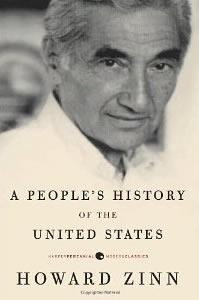
This is how the U. S. has treated the Native Africans: “They were packed aboard the slave ships, in spaces not much bigger than coffins, they are usually chained to the decks by the neck and legs… one of every three blacks transported overseas died, but the huge profits made it worthwhile for the slave trader, and so the blacks were packed into the holds like fish… Whatever horrors can be imagined in the transport of black slaves to America must be multiplied for black women, who were often one third of the cargo. Slave traders reported: ‘I saw pregnant women give birth to babies while chained to corpses which our drunken overseers had not removed…'” (Howard Zinn, A People's History of the United States )
This is how the U. S. has devastated Vietnam: “By the end of the Vietnam war, 7 million tons of bombs had been dropped on Vietnam, more than twice the total bombs dropped on Europe and Asia in World War II—almost one 500-pound bomb for every human being in Vietnam. It was estimated that there were 20 million bomb craters in the country. In addition, poisonous sprays were dropped by planes to destroy trees and any kind of growth….On March 16, 1968, a company of American soldiers went into the hamlet of My Lai 4, in Quang Nagai province. They rounded up the inhabitants, including old people and women with infants in their arms. These people were ordered into a ditch, where they were methodically shot to death…It was estimated that between 450 and 500 people—most of them women, children and old people—had been slain and buried there….Colonel Oran Henderson, who had been charged with covering up the My Lai killings told reporters in early 1971: ‘Every unit of brigade size has its May Lai hidden someplace.'” (Howard Zinn).
But all histories we read claim that the Europeans were a civilized lot and the Africans and the Native Indians were savages! All histories speak about the ‘Whiteman's burden', about their ‘civilizing mission'. Even we the Indians were ‘civilized', we were ‘modernized', and we do have ‘democracy', only because we have been ‘fortunate' enough to have British Colonialism, we are taugt both by the European historians and by our own historians!
In an article titled The British Rule in India , written in 1853, Karl Marx says: “England, it is true, in causing a social revolution in Hindustan, was actuated only by the vilest interests, and was stupid in her manner of enforcing them. But that is not the question. The question is, can mankind fulfill its destiny without a fundamental revolution in the social state of Asia?”
But, as Howard Zinn tells, ‘it is enough to make us question, for that time and ours, the excuse of progress in the annihilation of races, and the telling of history from the standpoint of the conquerors and leaders of Western civilization.'
Zinn continues: “So, Columbus and his successors were not coming into an empty wilderness, but into a world which in some places was as densely populated as Europe itself, where the culture was complex, where human relations were more egalitarian than in Europe, and where the relations among men, women, children, and nature were beautifully worked out than perhaps any place in the world. …Behind the English invasion of North America, behind their massacre of Indians, their deception, their brutality, was that special powerful drive born in civilizations based on private property.”
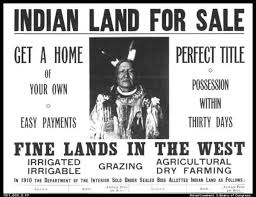
In India we are in dire need of writers like Howard Zinn to search and find the people who are not seen in our histories—the Adivasis (the people of Niyamgiri Hills, of the Narmada Valley, of the Dhandakaranya) who were displaced and annihilated by our ‘machine of progress' which we borrowed from the West. We want histories written from the standpoint of manual scavengers, from the viewpoint of untouchables, from the perspective of the farmers, Dalits, children (especially girls) and women.
And we also want histories from the viewpoint of the Environment, the flora and fauna. Zinn is too much preoccupied with the cruelty of the so called civilized race against the fellow beings to give attention to their cruelty against the environment. Look at a mild sample of the savagery of the ‘civilized': “Dismemberment was provided for in the Virginia Code of 1705. Maryland passed a law in 1723 providing for cutting off the ears of blacks who struck whites, …About twenty-five blacks and two Indians set fire to a building, then killed nine whites who came on the scene. …(all the twenty-seven) were captured by soldiers, some were burnt, others were hanged, one broke on the wheel, and one hung alive in chains in the town…one had been burned over a slow fire for eight to ten hours.”
Could the Environment have expected a better deal from such a ‘civilized' lot?
Once in the North America, the passenger pigeons were greater in number than all other birds. They lived together, nested together, and flew together in large numbers. In summer these birds nested in the vast forests of the northern frontier regions of the continent and in winter they migrated into the comparatively warmer forests in the south. In the breeding time, flocks of these birds would land on the trees and would make hundreds of nests even on a single tree. Each flock consisted of at least a minimum of 300,000 birds!

? Passenger pigeon (painting)
When the white men reached North America, they started hunting the pigeons for their meat and feather. Even after these birds have been continuously hunted for five decades, a flock that flew over the Cincinnati town in 1870 consisted of 20,000 lakh pigeons! The flock had been 510 kilometer long and 1.6 kilometer wide!! In 1878, from the 64 kilometer long and 16 kilometer wide nesting area of the passenger pigeons in the Michigan state, the hunters killed 10,000 lakh of the defenseless birds.
Today there is no passenger pigeon to fly in the skies. If the fate of the passenger pigeon, that could fly, was to disappear within decades of contact with the white man, what could have been that of the poor Giant Moa that couldn't fly? Somewhere in the time of evolution, the Moas lost their wings. They grew up to four meter in height and weighed more than 275 kilograms. These wingless birds lived 1000 lakh years in New Zealand, till the 12 th century when the humans entered the Pacific island. Hunting started for the bird's meat and eggs, yet the Giants survived till the Europeans arrived and in the 1850s, they were wiped out.
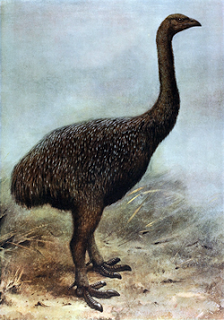
? Giant Moa
The Native Americans believed that ‘the earth does not belong to man, man belongs to the earth. Man did not weave the web of life; he is merely a strand of it. Whatever he does to the web, he does to himself.'
Therefore, we can't but agree with John Collier. Howard Zinn writes: “John Collier, an American scholar who lived among Indians in the 1920s and 1930s in the American Southwest, said of their spirit: “Could we make it our own, there would be an eternally inexhaustible earth and a forever lasting peace.””
From the U. S., a land from which the native inhabitants have completely been disinherited and eliminated through violence by the white settlers the so called civilised race, let's come to Kerala to witness somewhat the same fate of another native people —the adivasis of Kerala . If the tribals in other parts of India are displaced by our undemocratic ‘development' projects and the biggest democracy's innumerable secret MoUs with the corporate mining business; in Kerala, it is the ‘civilised' settlers who virtually eliminated them to grab their lands. The pauperized tribals are now a hapless lot infested with myriad grievances like the increasing number of unwed mothers (a ‘ disease ' being spread by the ‘civilised'), infant deaths due to malnutrition, and alcohol addicted men folk (also a civilised ‘disease').

Another face of Kerala, the most ‘developed' state of India
None of their arable lands is now in their possession and all their fruit and tuber yielding hills have been encroached and deforested. They dwell in the periphery of our democracy as outcasts or rather as an eyesore to the mainstream ‘WE' the ‘civilised' and ‘civilising' people. Even the mass death of their infants due to malnutrition is used to gain political mileage! In the arena of the political mud-slinging they are used just as the mud and that is their utility. Nobody is interested to give them back their lands and to let them continue their sustainable way of living. Once they lived happily in their fertile lands and forests; we deprived them of both and now their plight is that of the fish caught from the deep waters and put on the ground to survive.

The image is not from Ethiopia, but from Attappadi in Kerala
The Scheduled Areas and Scheduled Tribes Commission, which was formed in 1960 under the chairmanship of U. N. Dhebar to look into the problems of the tribal people in India, recommended returning all the tribal lands alienated since January 26, 1950, the day India became a republic, to the original owners. The Kerala Scheduled Tribes (Restriction on Transfer of Lands and Restoration of Alienated Lands) Act, 1975 extended the date from January 26, 1950 to January 26, 1960 to protect the settlers and land grabbers.

? Again, it is not from Ethiopia, but form Kerala (Attappadi)
Yet the successive Right and Left front governments showed no interest to implement the 1975 Act and to restore the alienated lands to the hapless Adivasis. The hold of the settler lobby in the political combinations of the state is so strong that on September 23, 1996, the Kerala Scheduled Tribes (Restriction on Transfer of Lands and Restoration of Alienated Lands) Amendment Bill, 1996 was passed by the Kerala Assembly to legalize all transactions of tribal lands that took place (of course, through fraudulent means) between 1960 and 1986. The land grabbing still continues in the tribal areas (‘ITDP report seeks action against land grab', The Hindu , June 17, 2013).
Disinherited: The Lost Birthright of the Adivasis of Kerala awaits its author.
And from Kerala let's go to central India, into the Dhandakaranya where the adivasis are being displaced and eliminated by the Indian State to satisfy our insatiable consumerist culture, to snatch their lands and forests and rivers for the corporate business to dig out bauxite and coal, limestone and dolomite; and to produce aluminium by contaminating their rivers and devastating their forests.
In the words of Arundhati Roy, “India has a surviving adivasi population of almost 100 million. They are the ones who still know the secrets of sustainable living. If they disappear, they will take those secrets with them. Wars like Operation Green Hunt will make them disappear. So victory for the prosecutors of these wars will contain within itself the seeds of destruction, not just for adivasis but, eventually, for the human race. That's why the war in central India is so important. …it is necessary to concede some physical space for the survival of those who may look like the keepers of our past but who may really be the guides to our future. To do this, we have to ask our rulers: Can you leave the water in the rivers, the trees in the forest? Can you leave the bauxite in the mountain?” ( Broken Republic )
 Sukumaran C. V. is a former JNU student and his articles on gender, communalism and environmental degradation are published in The Hindu. Email: [email protected]
Sukumaran C. V. is a former JNU student and his articles on gender, communalism and environmental degradation are published in The Hindu. Email: [email protected]
Comments are moderated

